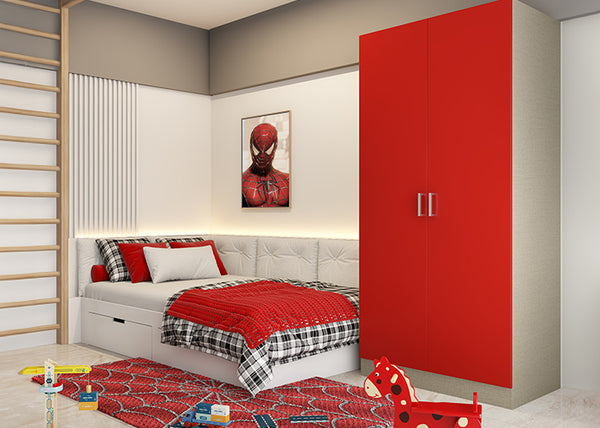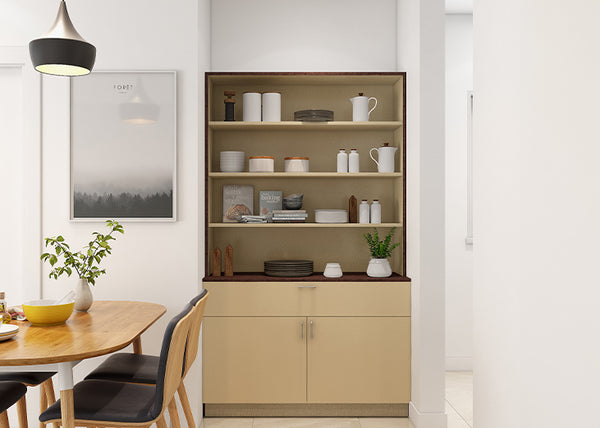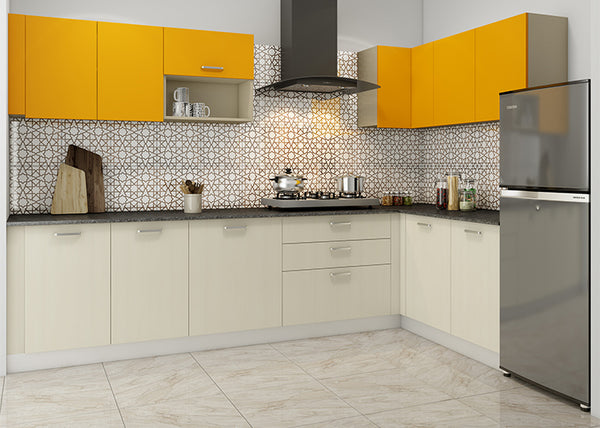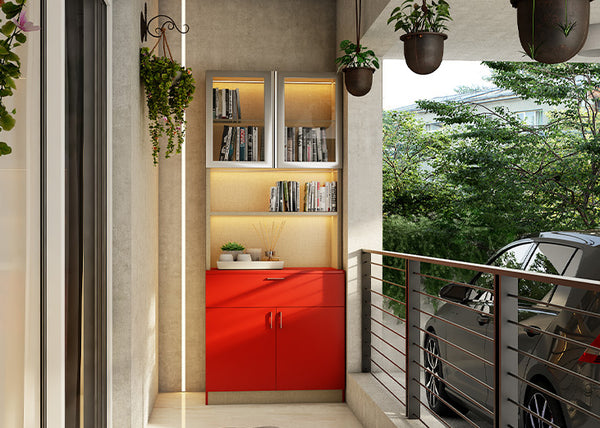Here's a lowdown of what you can expect when designing your home's interiors with Qarpentri.
Interior design costs at Qarpentri depend on several factors, like the project size, the materials and finishes chosen for their home's interiors, how complicated the design is, and the client's needs and wants. To help us understand this better, we asked Tasneem Arsiwala, Studio Manager of our Thane Experience Centre, for her insights. Let's break down these factors.
The size and complexity of a project play a significant role in determining its overall interior design charges. Tasneem says, "Typically, smaller residential projects entail lower costs than larger residential endeavours due to factors such as scale, materials required, and labour involved. Understanding the project's scope is crucial for accurate budgeting and planning, allowing clients and designers to align expectations and resources accordingly".

The intricacy of a design, whether it involves special skills, customisation, or unique materials, often correlates with higher interior design costs. Projects featuring custom-built furniture, intricate detailing, or advanced technology integration may demand additional time and expertise from the designer, leading to increased charges. Studio Manager Tasneem shares that it's important for clients to understand that complexity can impact both the budget and the project timeline and to discuss these factors openly with their designer to ensure alignment with their vision and budget constraints.

Tailoring a design to meet the specific preferences and requirements of the client can significantly affect the overall interior design cost. Clients with distinct style preferences may necessitate extra research and customisation, potentially increasing expenses. Moreover, clients prioritising functionality or sustainability may influence material choices, impacting costs accordingly. Understanding and accommodating these preferences is essential for delivering a design that aligns with the client's vision while managing budget expectations effectively.

The selection of materials, furniture, fixtures, and accessories significantly impacts the project budget. Opting for high-end materials and designer furnishings will inevitably raise costs, whereas choosing more budget-friendly options can help keep expenses in check. Balancing quality and cost is crucial to achieving the desired aesthetic while staying within budget constraints and ensuring your interior design fees align with your design goals.

When faced with rush projects or tight deadlines, designers may need to invest extra resources or work overtime to meet the requirements, potentially leading to increased charges for the client. It's essential for both parties to communicate effectively to ensure expectations are managed, and deadlines are met without compromising quality.

In addition to their core design offerings, certain designers extend their services to include project management, procurement assistance, and post-design support. While these services may come at an extra cost, they offer invaluable support and ensure a smoother, more comprehensive experience for the client throughout the project lifecycle.

Understanding these factors can help designers and clients navigate the complexities of interior design prices and ensure a fair and transparent exchange of services for value. Get in touch with our experts at Qarpentri for more creative design ideas.
Also, check out
Do check the FAQs below to get answers to any questions you may have.
1. What factors determine the cost of interior design services?
Several factors, including the design complexity, quality of finishes, and scale of the project influence the charges for interior design services. Projects with intricate designs, premium finishes, and larger spaces typically require more resources and time, thus resulting in higher costs.
2. How do interior designers typically charge for their services?
Interior designers usually charge interior design fees ranging between 7% to 10% of the total project value. This percentage-based fee structure allows designers to align their compensation with the scope and scale of the project, ensuring fair compensation for their expertise and efforts.
3. Do different types of interior design styles impact pricing?
Yes, the choice of interior design style can significantly impact pricing. Styles such as Scandinavian or Classical, characterised by specific design elements and finishes, may incur higher costs due to their intricate detailing and craftsmanship requirements. For instance, Classical styles often involve intricate mouldings on furniture and elaborate finishes, which demand skilled labour and premium materials, thus contributing to higher pricing.
4. How does the level of customisation influence the cost?
The level of customisation directly affects the design fees for interior design. Features such as intricate detailing, unique design elements, and high levels of customisation increase the project's complexity, leading to higher costs. For example, adding numerous drawers to a wardrobe or incorporating multiple finishes into a single piece of furniture can escalate construction costs and material expenses.
5. Can interior designers provide estimates or quotes before starting a project?
Yes, interior designers can provide estimates or quotes before commencing a project. Designers can offer accurate cost estimates by examining the floor plan and understanding the client's design preferences. These estimates allow clients to assess the feasibility of their design vision within their budgetary constraints and make informed decisions about proceeding with the project.
6. Does the size of the project affect the overall cost of interior design services?
Yes, the size of the project directly influences the overall interior design service fees. Larger projects typically require more extensive planning, coordination, and resources, leading to higher costs. Additionally, larger spaces may necessitate the use of more materials and furnishings, further contributing to the overall expense. Therefore, the scale of the project is a crucial factor in determining the final cost of interior design services.